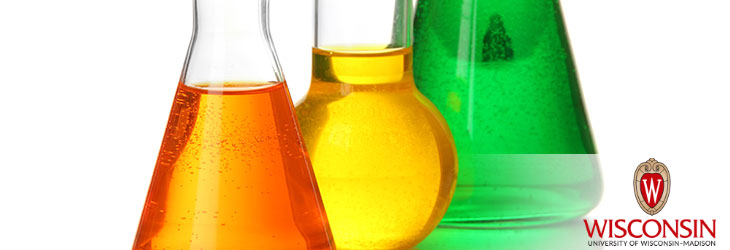Materials & Chemicals

Superior Nanocomposite Welding Wire
WARF: P130003US01
Inventors: Xiaochun Li, Hongseok Choi, David Weiss
The Wisconsin Alumni Research Foundation (WARF) is seeking commercial partners interested in developing a method to improve weld quality with new welding wires made of metal alloys and dispersed high-temperature nanoparticles.
Overview
Advanced metal alloys with high strength and fracture toughness are used in an increasing number of applications. However, some metal alloys like Al-Cu have been underutilized due to poor weldability. The extent of ‘hot cracking’ that can occur during cooling is one measure of weld quality. Attempts to reduce the susceptibility of a material to hot cracking and therefore improve weldability have been unsatisfactory.
The Invention
UW–Madison researchers have developed methods to fabricate welding wires exhibiting significantly reduced hot cracking defects.
The wires can be made from a range of metal alloys, including aluminum, steel and titanium-based alloys. Nanoparticles composed of high-temperature inorganic materials, such as intermetallic compounds or ceramics, are dispersed into the alloy. The composite material is extruded in a single stage to form wire.
The wires can be made from a range of metal alloys, including aluminum, steel and titanium-based alloys. Nanoparticles composed of high-temperature inorganic materials, such as intermetallic compounds or ceramics, are dispersed into the alloy. The composite material is extruded in a single stage to form wire.
Applications
- Wire for welds and repairs
- Use with 7xxx and 2xxx series alloys in aerospace and military vehicles
- Alloys that have high hot tearing tendency during solidification
Key Benefits
- Reduced hot cracking defects
- Grain refinement and modification
- Wires can be made from underused metal alloys.
- Avoids impurities
- No need for heat treatment or filler metals
Additional Information
Related Technologies
Tech Fields
For current licensing status, please contact Michael Carey at [javascript protected email address] or 608-960-9867